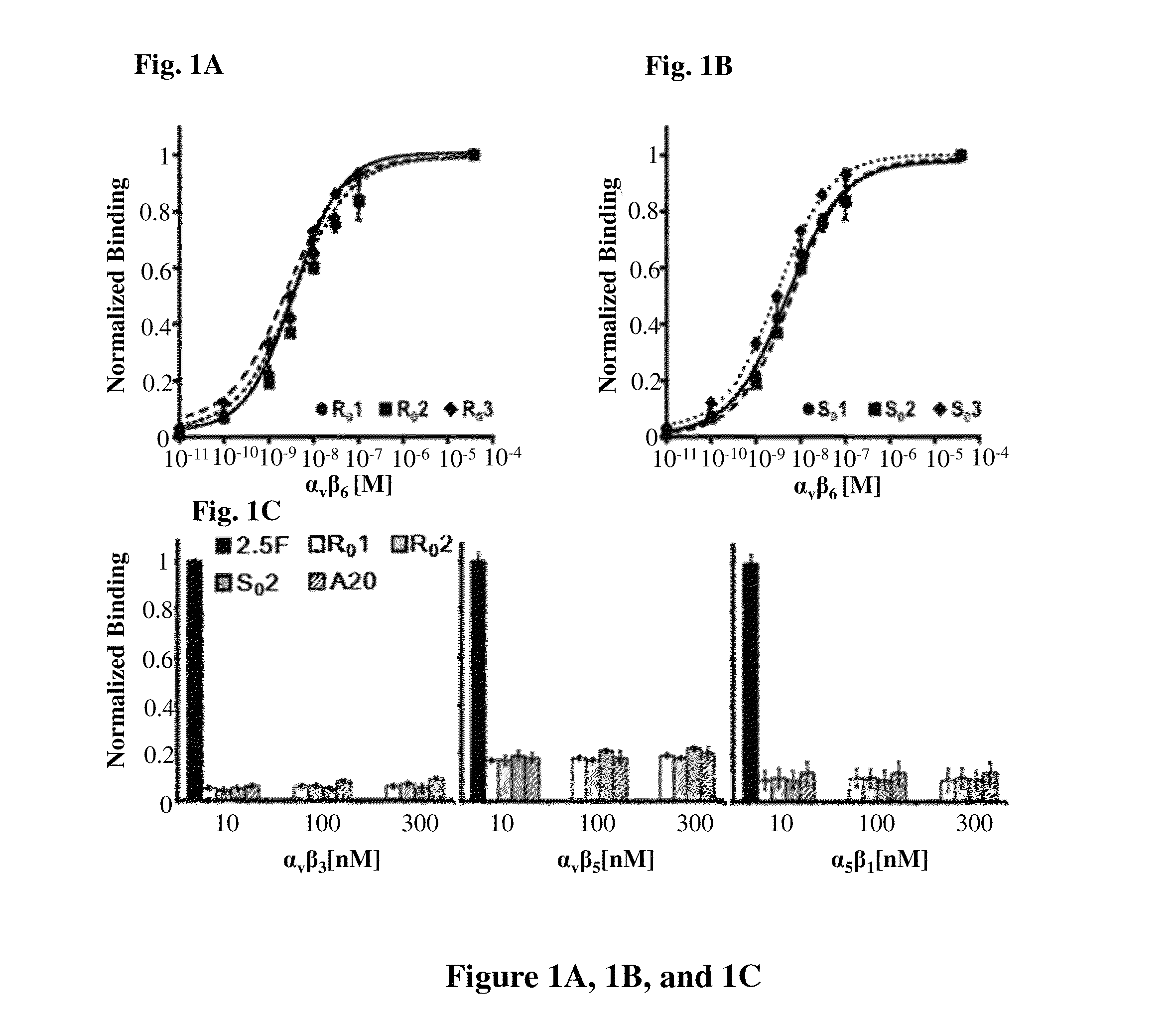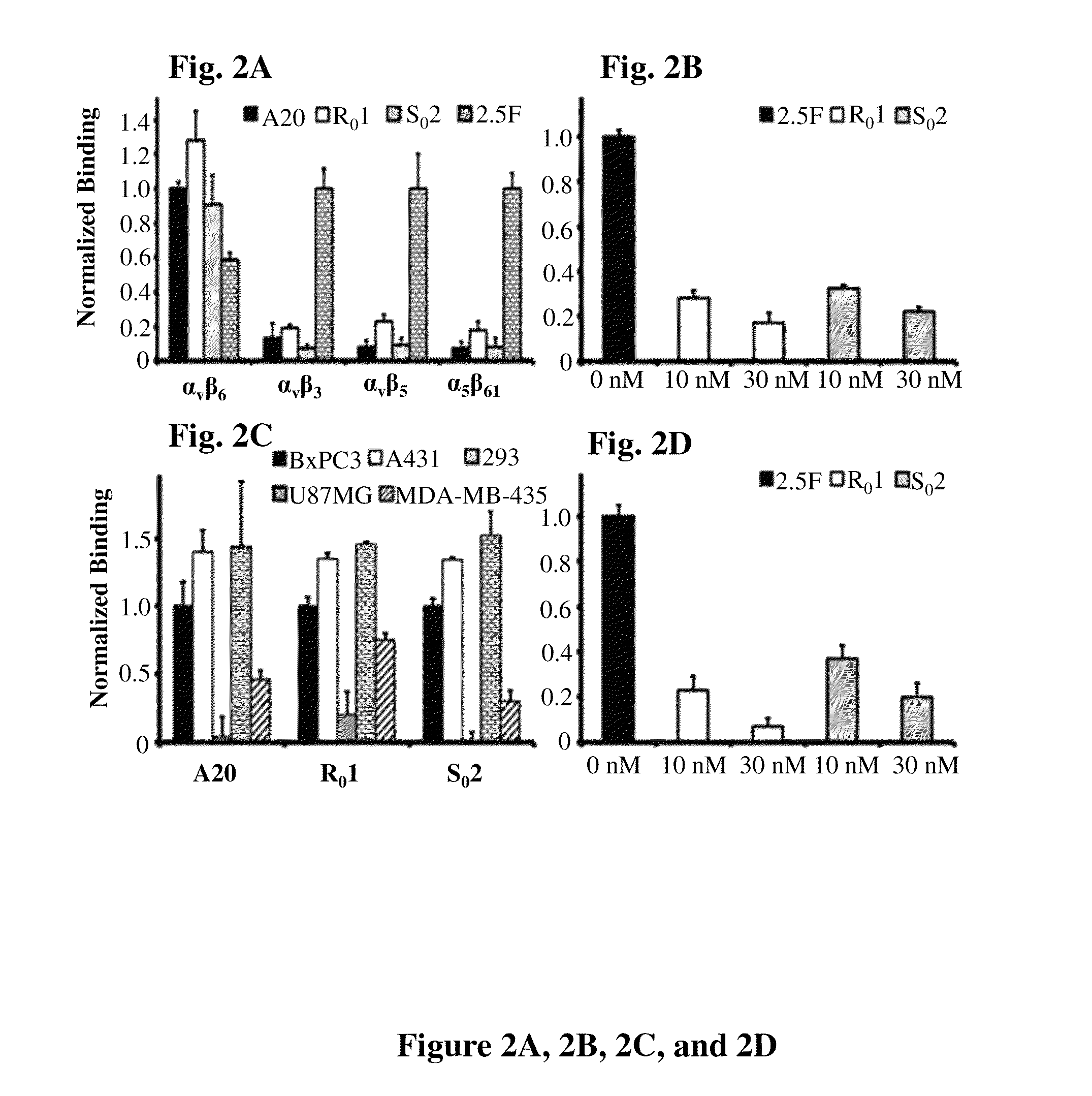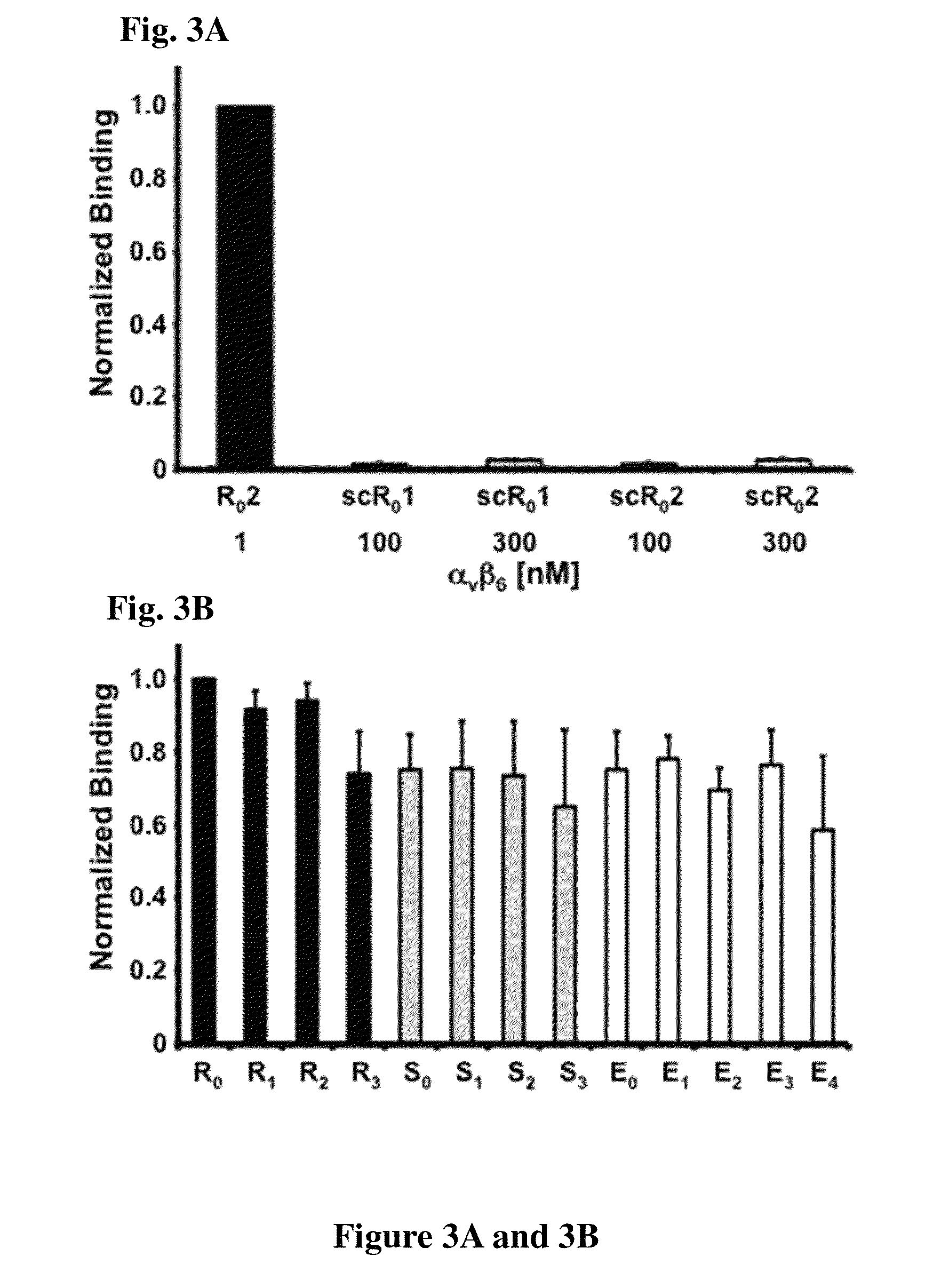Cystine knot peptides that bind alpha-V-beta-6 integrin
a technology of cystine knots and integrins, applied in the field of peptides, can solve the problems of poor in vivo stability and the inability of peptides to be ideal translational candidates
- Summary
- Abstract
- Description
- Claims
- Application Information
AI Technical Summary
Benefits of technology
Problems solved by technology
Method used
Image
Examples
example 1
Engineering αvβ6 Binders
[0150]Nine phage-display derived lead-motif (RTDLXXL (SEQ ID NO: 6)) containing sequences were engrafted into loop-1 of an acyclized cystine knot scaffold Momordica cochinchinensis Trypsin Inhibitor-II (MCoTI-II) from squash (14, 30, 31). These chimeric-binders are referred to as the “R-knots” (R0) since MCoTI-II has high arginine content. Optimal loop-1 length and motif position were determined, and enabled design of libraries X3RTDLXXLX3 (SEQ ID NO: 11) and X4RTDLXXLX3 (SEQ ID NO: 12) (L2 and L3, Table 3), which were pooled and sorted by FACS. Flow cytomerty of clones G1-G9 was carried out with 100 nM integrin αvβ6 and 25 nM integrin αvβ6 (data not shown). Clones that demonstrated greatest binding were successively analyzed with lower concentrations of integrin αvβ6 to determine optimal motif position and loop length.
[0151]The X3RTDLXXLX3 (SEQ ID NO: 11) library dominated sort-round five (1 nM target). Frequent occurrence of arginine or lysine residues at c...
example 2
Scaffold Swapping and its Effects on Binding Affinity and Specificity
[0153]A novel αvβ6-binding activity, “2”, was grafted into several arginine-rich scaffolds (R0-3), glutamic acid-rich scaffolds (E0-4) and serine-rich scaffolds (S0-3). αvβ6-binding was determined by flow cytometry (Tables 4 and 5, FIG. 3B) to be comparable across scaffolds; maintenance of high-affinity binding to integrin αvβ6 indicates that engineered loops and knotted scaffolds can function independently and interchangeably. Novel integrin αvβ6 binding activities called “1”, “2”, and “3”, were each tested in the context of both the R0 and S0 scaffolds for their ability to bind target. The KD of R01, R02, and R03 were measured to be 3.6±0.9 nM, 3.2±2.7 nM, 3.6±1.6 nM, respectively, by flow cytometry using soluble integrin αvβ6 (FIG. 1A). Interestingly, the KD of the S01, S02 was only slightly less at 6.5±2.0 nM and 6.0±0.1 nM, respectively, while the KD of S03 (3.1±0.5 nM) matched that of its parent (FIG. 1B). T...
example 3
Protein and Cell Capture Assays
[0155]Biotinylated peptides A20, R01, S02 and 2.5F were immobilized onto neuravidin coated plates. All four peptides captured recombinant integrin αvβ6, but only knottin 2.5F captured integrins αvβ3, αvβ5 and α5β1. Engineered binders show different levels of specificity for their targets (FIG. 2A). Biotinylated A20, precoated onto microwell plates, engaged in competitive binding with soluble R01 or S02 for recombinant integrin αvβ6. Dose dependent inhibition indicated competition between peptides for a specific target-binding site (FIG. 2B). A20, R01 and S02 also captured cells that express native integrin αvβ6 (FIG. 2C). Flow cytometry showed all tested cell lines (BxPC-3, A431, U87MG, MDA-MB-435) but the 293 cells express integrin αvβ6. Peptides R01 and S02 blocked adhesion of BxPC-3 cells onto A20 coated wells confirming specific binding between peptides and functionally-active integrins expressed on cellular surfaces (FIG. 2D). 64Cu-DOTA-labeled pe...
PUM
| Property | Measurement | Unit |
|---|---|---|
| temperature | aaaaa | aaaaa |
| natural abundance | aaaaa | aaaaa |
| concentrations | aaaaa | aaaaa |
Abstract
Description
Claims
Application Information
 Login to View More
Login to View More - R&D
- Intellectual Property
- Life Sciences
- Materials
- Tech Scout
- Unparalleled Data Quality
- Higher Quality Content
- 60% Fewer Hallucinations
Browse by: Latest US Patents, China's latest patents, Technical Efficacy Thesaurus, Application Domain, Technology Topic, Popular Technical Reports.
© 2025 PatSnap. All rights reserved.Legal|Privacy policy|Modern Slavery Act Transparency Statement|Sitemap|About US| Contact US: help@patsnap.com



